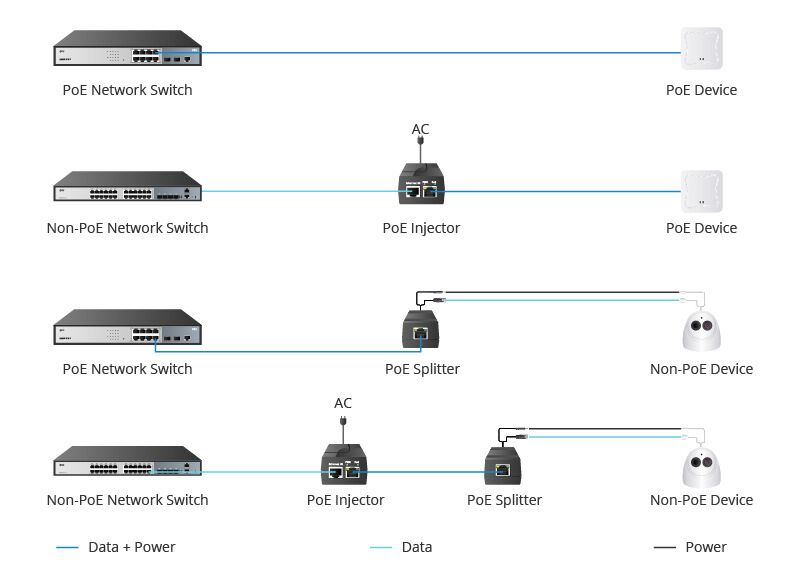Overview
PoE lets you power a device—such as an IP phone, surveillance camera, or wireless access point—over the network cable that is used for data traffic. This allows you to place endpoints anywhere without the fear of not having available socket for power and in areas that are usually difficult to reach. Power over Ethernet (PoE) is the ability for the LAN switching infrastructure to provide power over a copper Ethernet cable to an endpoint or powered device. It allows us to use network cables such as Cat5/Cat5e/Cat6/Cat6a cables to provide data connections and electric power to wireless access points, IP cameras, VoIP phones, PoE lighting and other powered devices (PDs). With the use of PoE technology, we can easily deliver power to indoor or outdoor PDs without the need to install additional electrical infrastructure or to deploy power outlets at every endpoint.
How it works

The Switch which is the PSE (Power Sourcing Equipment ) sends a fast link pulse to detect power enabled device, which then sends a link pulse back. The switch and PDs (Powered device) negotiate the final power level via Layer 2 capability exchange protocol – Cisco Discovery Protocol (CDP). This capability was developed and first delivered by Cisco in 2000 in order to support the emerging IP Telephony deployments. When Cisco Systems® first introduced powered Ethernet ports, the technology was called “inline power”. In order to allow for universal terminology, Cisco now uses “Power over Ethernet” or “PoE” for all deployments.
IP telephones, such as desktop PBX phones, need power for their operation, and PoE enables scalable and manageable power delivery and simplifies deployments of IP Telephony. While IP telephones and wireless access points (APs) are the most intuitive uses for PoE, the advent of the 802.3af standardization of PoE opens the door to a new generation of network-attached devices, such as video cameras, point-of-sale devices, security access control devices (card scanners), building automation and industrial automation.
How to Add PoE in Network
The PoE enabled device generally gets its power from three different sources: PoE switch, PoE injector, and PoE splitter. The PoE switch is the easiest way to power up the PDs. You only need to run Ethernet cables from a PoE network switch port to the terminal PoE device as shown. A PoE injector is used when there is no PoE switch in the network. The injector has an external power supply that is responsible for powering the POE enabled device and also pass data between the switch and the POE enabled device. PoE splitters is powered by the POE switch which in turn also supply power, but do so by splitting the power from the data and feeding it to a separate input that a non-PoE compliant device can use. It is commonly used for deploying remote non-PoE devices with no nearby AC outlets in the network.

Q&A
• Power Sourcing Equipment (PSE) – the switch providing power
• Powered Devices (PDs) – end device consuming power